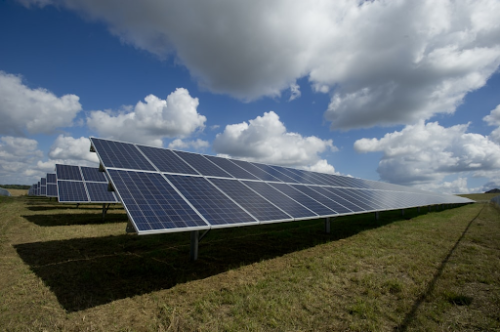Image courtesy of Unsplash.
What do fuel cells, water splitting, and artificial photosynthesis have in common? They’re all vital technologies in the fight to transition away from fossil fuels towards a brighter, cleaner energy future. They also all require a specific type of chemical reaction to work. This reaction, called a proton-coupled electron transfer (PCET) reaction, is widespread across energy studies, as well as in biological systems. In this reaction, protons and electrons are transferred either simultaneously or one at a time. Understanding PCET reactions is fundamental to a better understanding of how to improve cutting-edge sustainable technologies.
Robert E. Warburton, an Arnold O. Beckman Postdoctoral Fellow at Yale University working in the Hammes-Schiffer group, has approached this important problem using computational modelling. While previously his collaborators in the Mayer lab had collected experimental data on the PCET reactions, computational modeling can give deeper insight into these systems. “If we want to understand how to control the chemistry, we need to know what happens in between that initial and final stage that you see in an experiment. And a lot of times that happens on very short timescales,” Warburton said.
His main research goal was to examine how different materials require different amounts of energy to undergo a PCET reaction. Each material has a unique property called band gap. Band gap is associated with the difference in energy between the highest and lowest electron levels within the material. Warburton initially hypothesized that a larger band gap would make a PCET reaction have a larger bond dissociation free energy (BDFE), which measures how hard it is to break a bond.
Specifically, Warburton’s study focused on how defects in materials could affect the reaction. Defects could cause the material to react all at one site: PCET can occur at either low electron levels or, in the case of a defect, high electron levels that carry a positive charge. Typically, only one value is reported for the BDFE, so it’s important to consider how the defects in the material could impact its actual performance.
Some of the titanium oxide (TiO2) metal oxides transferred the electron from the valence band, a lower electron energy level where the outermost electrons of the material lay, and some transferred the electron from the conduction band, a higher electron energy level to which some of these electrons jump. TiO2 is an ideal material to study this because its conduction band has a different orbital shape than the valence band. The conduction band, more closely associated with titanium, has an electron cloud, or orbital, that is shaped like a flower. The valence band, more closely associated with oxygen, has an orbital that is shaped like a peanut. Warburton’s model showed a significant difference between the BDFE of the valence and conduction bands.
Although these results confirmed Warburton’s hypothesis, he and his collaborators concluded that the model was too simple. While there certainly was a relationship between the band gap and the energy of the bond, that wasn’t the whole picture. “We saw the big result that is interesting and compelling, but we don’t necessarily have a straightforward answer as to why. So really the hard part about this was doing the analysis and sensitivity,” Warburton said.
In order to have a more complete model, Warburton and his colleagues incorporated another theoretical framework, called Marcus theory. Marcus theory deals with the rearrangement of atoms in the material during electron transfer. More specifically, an electron transfer can only occur if there is enough energy to rearrange chemical bonds in the surrounding environment to accommodate the transfer. Including these effects in the model made it more complicated but better able to explain experimentally observed behavior.
Warburton says his work is far from over. “All we’ve been looking at so far is reaction energies and thermodynamics—basically how favorable the processes are. Now we want to start looking at the kinetics of these reactions, so how fast they go,” he said. Further down the line, his results could one day help us understand why there may be gaps between the theoretical and actual performance of materials. Armed with this understanding, engineers and scientists can choose the optimal material for green technologies. Although this research seems incredibly specific, the applications are far-reaching and could impact the way we design green technologies in coming years.
Warburton’s postdoctoral research is supported by the Arnold and Mabel Beckman Foundation through an Arnold O. Beckman Postdoctoral Fellowship. This research study was also supported as part of the Center for Molecular Electrocatalysis, an Energy Frontier Research Center funded by the U.S. Department of Energy, Office of Science, Basic Energy Sciences.

